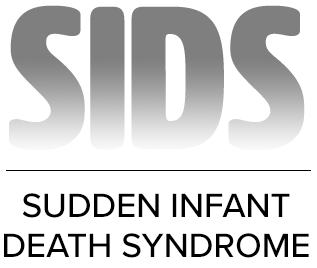Course Modules
Safe Sleep Background
What is Safe Sleep?
Putting baby to sleep in ways that can help protect him/her from dangers, such as choking, suffocation, and sudden infant death syndrome (SUID).
What is Unsafe Sleep?
Anything in the caretaker’s control that could increase an infant’s risk of sleep-related death.
This could be due to a number of factors, sleeping position, sleeping surface, sleeping environment, cultural customs and belief, simply not knowing safe sleep practices and the recommendations.
Sudden Unexpected Infant Death

What is it?
Sudden unexpected infant death is a sudden and unexpected death of a baby aged younger than 1 year. For these deaths, there is no obvious cause and often happen during sleep or in the baby’s sleep area.
Sudden unexpected infant deaths include:
- Sudden infant death syndrome.
- Accidental suffocation in a sleeping environment.
- Other deaths from unknown causes
Although SUID is not always due unsafe sleep, it can include factors such as sleeping position, sleeping surface, and sleeping environment.
What are the risk factors?
Age: SUID is most common for babies between 1 and 4 months. But it can happen at any time during the first year of life.
Time of year: Infants born around the colder months are at a disadvantage because as parents, we want to ensure our babies are comfortable when they’re sleeping – it’s just our natural instinct. So, during the winter, when the temperature is lower, babies are more likely to have blankets in their sleeping environment, which is a red flag for safe sleep practices.
Health Status: Premature babies are at a higher risk due to their health status as well, and may have other compromising conditions that could attribute to SUID (respiratory issues, heart complications, etc.).
Race: Black babies are 2.5-3 times more likely to die due to SUID and this does not take into account any other type of disparity such as education level, marital status, or socioeconomic status.
How can I reduce my baby’s risk of SUID?
- Follow safe sleep practices
- Don’t smoke around baby
- Breastfeed your baby, if possible
- Make sure your baby receives all necessary vaccinations
Unsafe Sleep Deaths in Ohio
3
3 babies die each week in Ohio due to unsafe sleep environments.
682
Between 2018–2022, there were 682 infant sleep-related deaths in Ohio.
52%
Between 2018-2022, 52% of all Ohio infant sleep-related deaths occurred in an adult bed.
Please rotate your screen in landscape mode to play the game.
Please open your browser viewport to play the game.
There are 10 unsafe items in the following picture.
Click on all 10 to make the crib safe...
Correct!
Stuffed animals can be dangerous, a baby could roll over onto the stuffed animal covering their face and cause suffocation or a baby could become entangled in the object and cause strangulation, all stuffed animals should be removed from the sleep space. Do not place anything in the crib with baby besides a firm mattress and tight-fitted sheet.
Back is best! Babies who sleep on their backs breathe easier and are less likely to suffocate or choke. Place your baby on their back to sleep for the first year of life.
Blankets are dangerous, a baby could cover their face or roll over onto blanket causing suffocation or strangulation. Do not place anything in the crib with baby besides a firm mattress and tight-fitted sheet. Consider using a "sleep sack" instead of blankets to keep your baby warm. Remember to dress the baby not the bed.
Bumper pads are dangerous due to suffocation, baby may position themselves against the pads and be unable to move or become trapped between the mattress and bumper pads. Do not place anything in the crib with baby besides a firm mattress and tight-fitted sheet.
Space heaters are dangerous due to fire hazard; they can also make the room too warm. The ideal room temperature for babies to sleep is between 68 and 72 degrees. Do not place crib/portable near any heating source such as a space heater, a fireplace, or a heat vent.
Loose curtains and cords from window blinds are dangerous and create a risk for strangulation. Do not place crib/portable crib near windows, blinds, or loose curtains.
Babies are curious and could easily grab and ingest the pills next to the crib. All medications should be place out of sight and out of reach of all children. Do not place pills or medications near a crib/portable crib due to poisoning and/or choking hazards.
Pillows can be dangerous due to suffocation, a baby could turn or roll over and their face could be covered by the pillow causing suffocation. A pillow should never be used for a baby as a positioner and should never be in a crib. Do not place anything in the crib with baby besides a firm mattress and tight-fitted sheet. To decrease risk of baby developing plagiocephaly, or "flat head," practice supervised tummy time while baby is awake.
Bottles, especially when filled, are dangerous due to choking, suffocation and asphyxiation. Babies should always be supervised during feedings. Do not place anything in the crib with baby besides a firm mattress and tight-fitted sheet.
Outlets are dangerous due to fire hazard and electrocution. Do not place crib/portable crib near outlets to prevent an older infant from playing with or putting something into the outlet.
Congratulations!
The crib is now safe.
items left
Know someone that might learn something from this site?
Home | About Safe Sleep Academy | Community Health Workers & Home Visitors | Families & Caregivers | Physicians & Health Care Professionals
© Safe Sleep Academy 2020-2024




